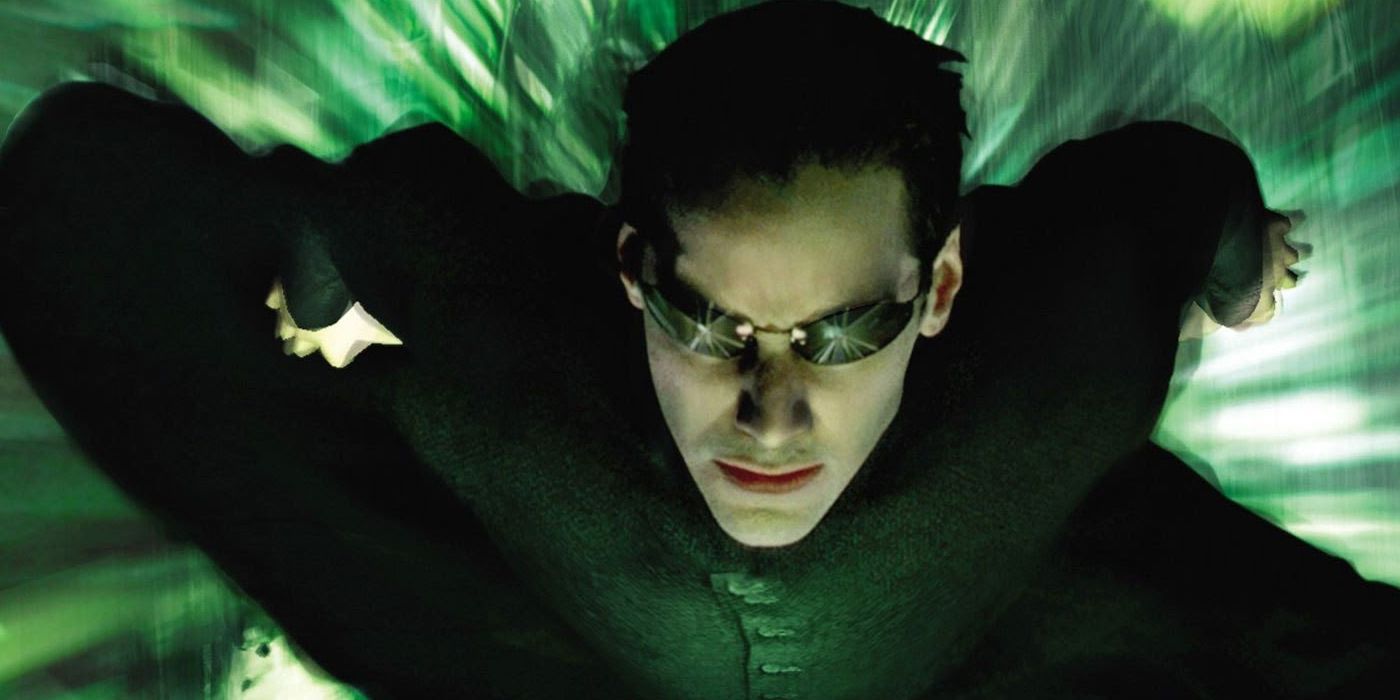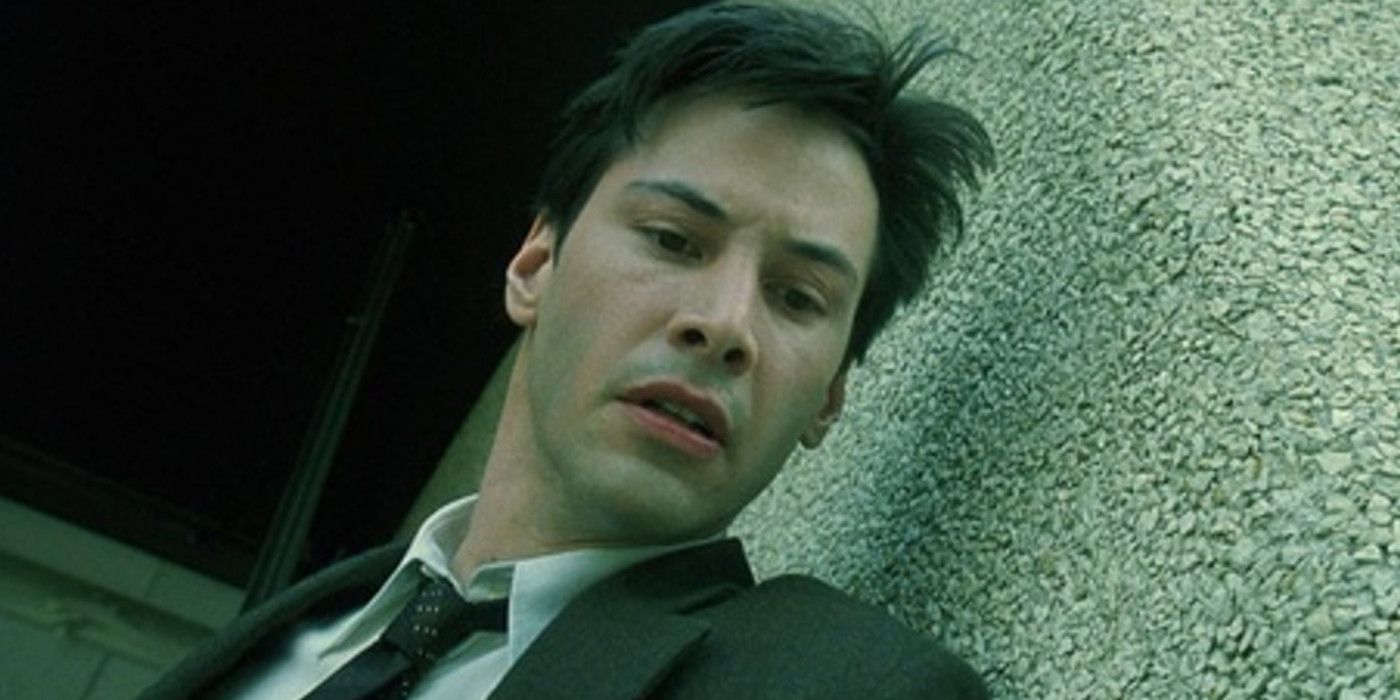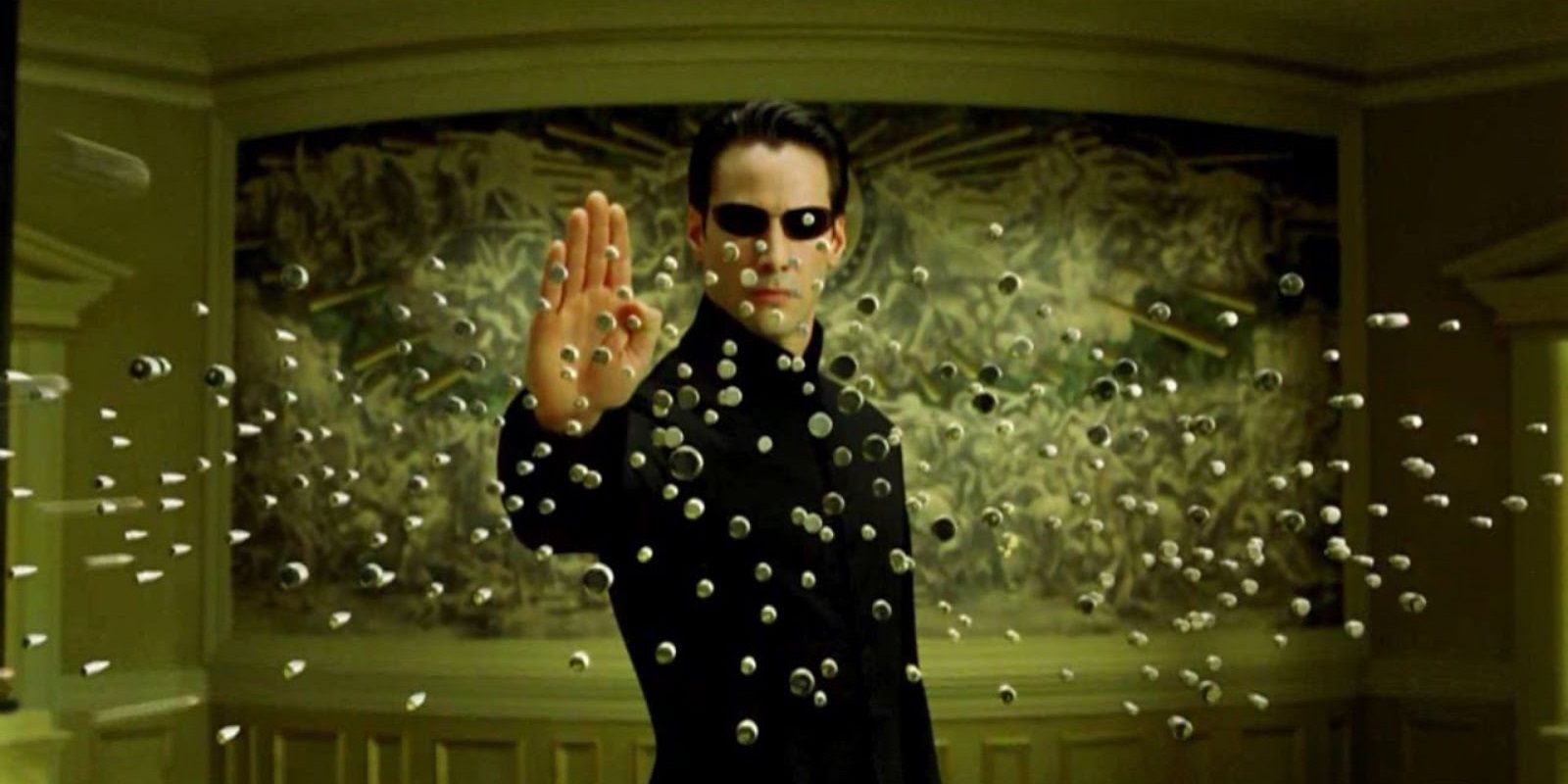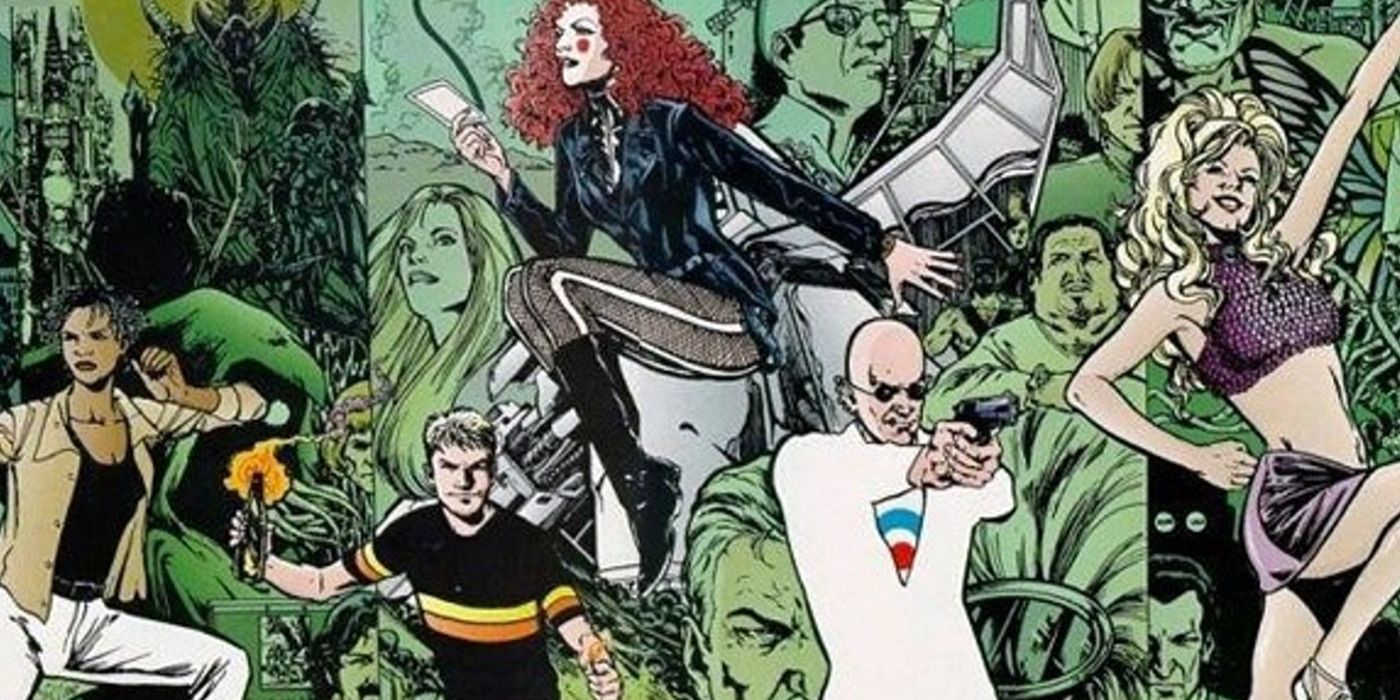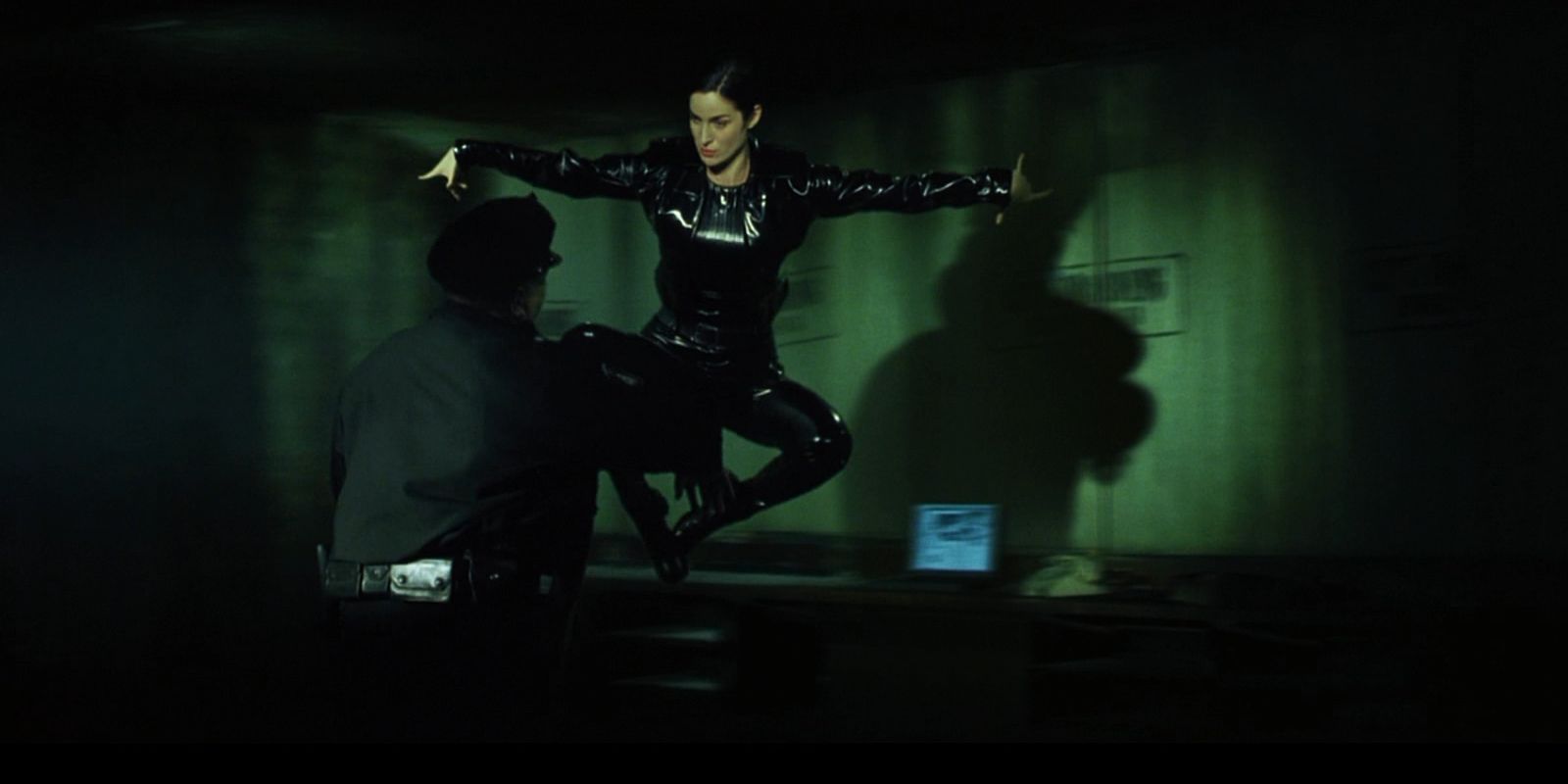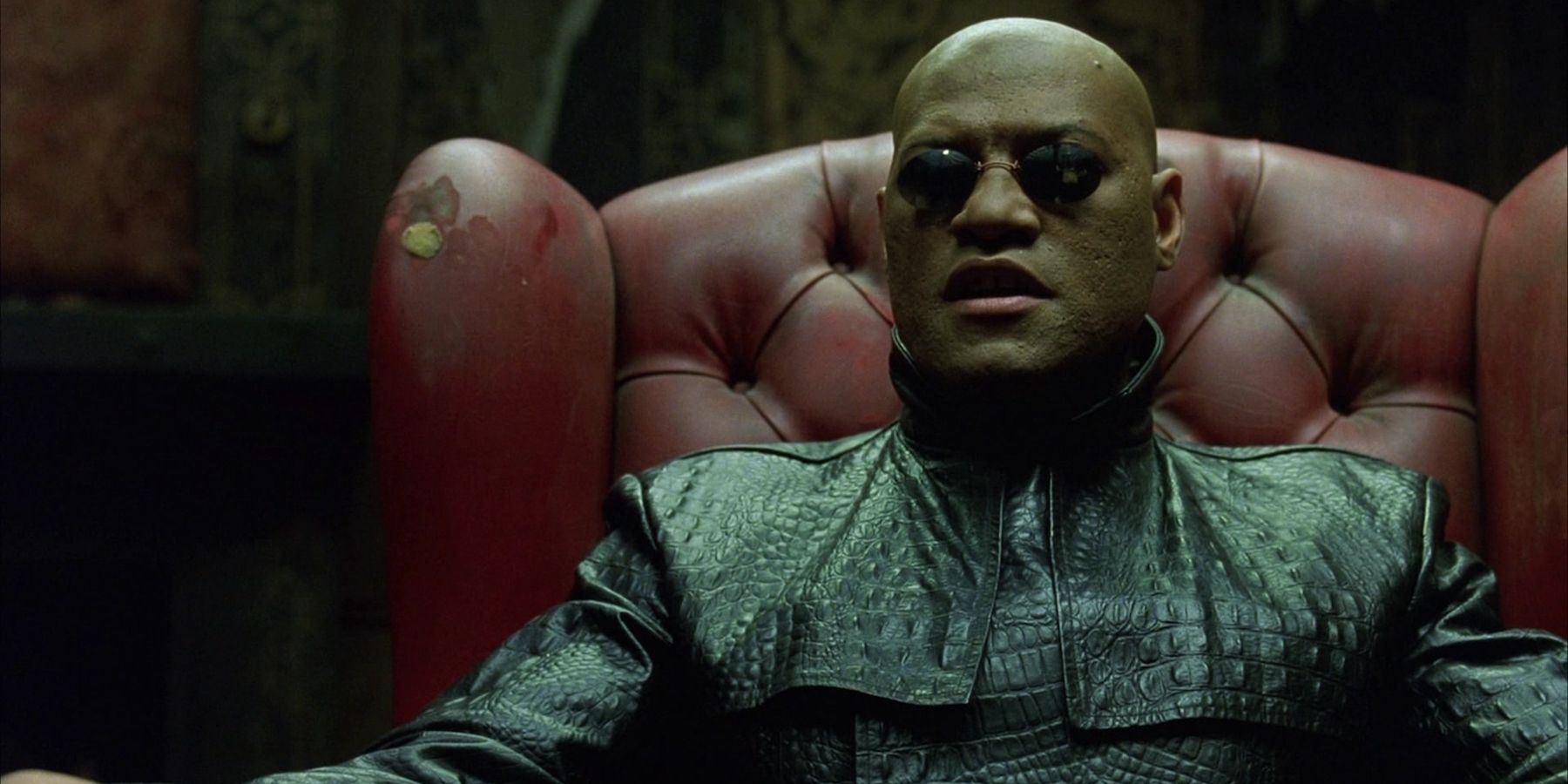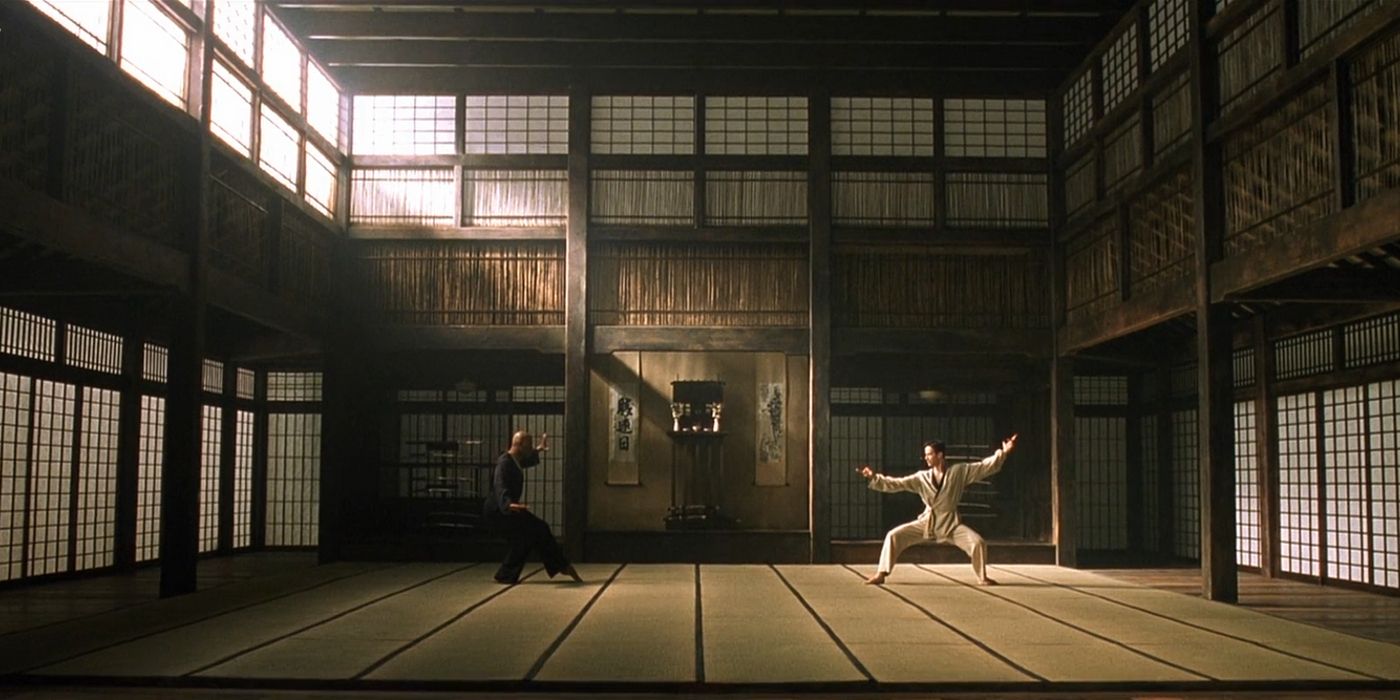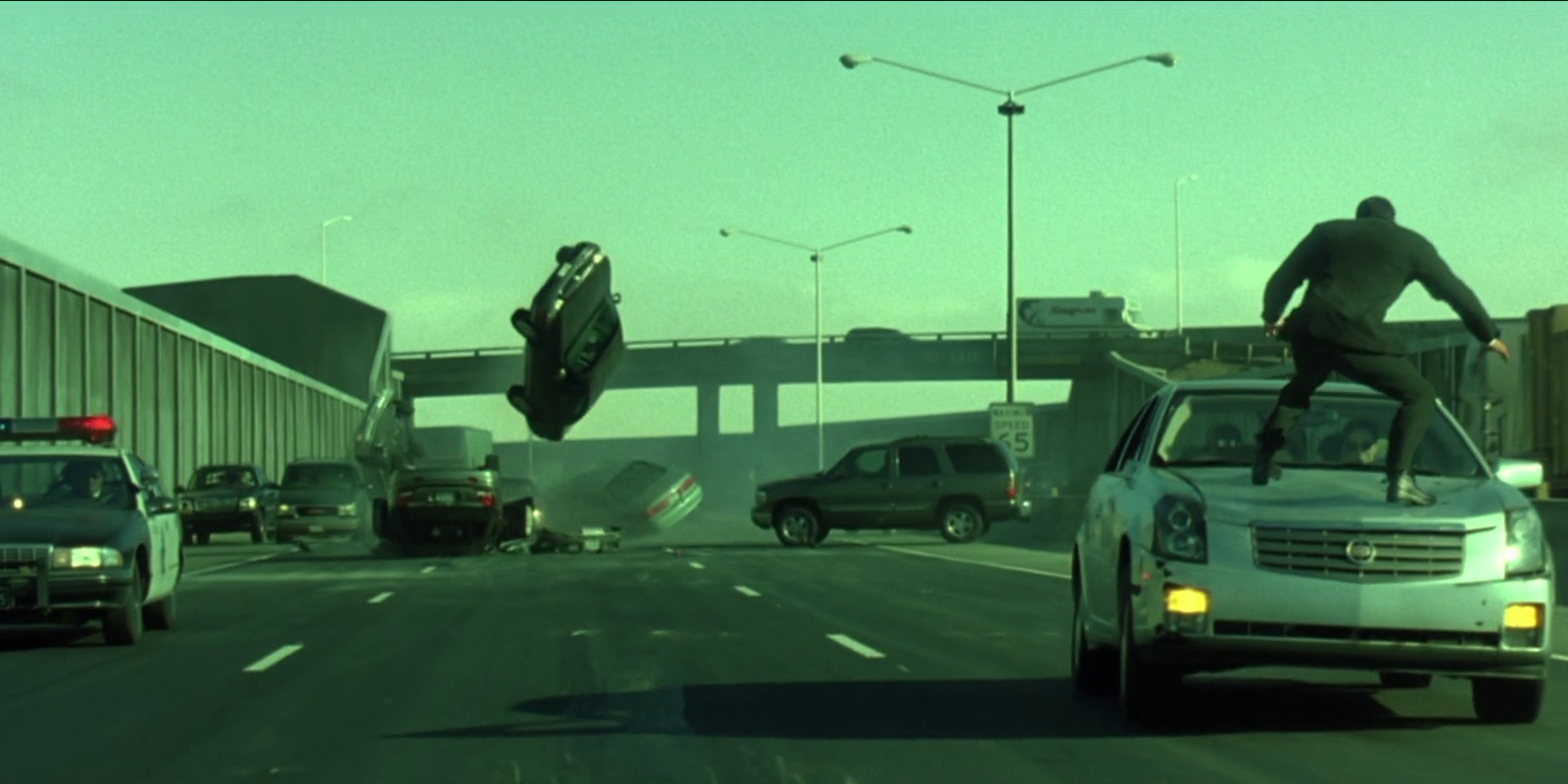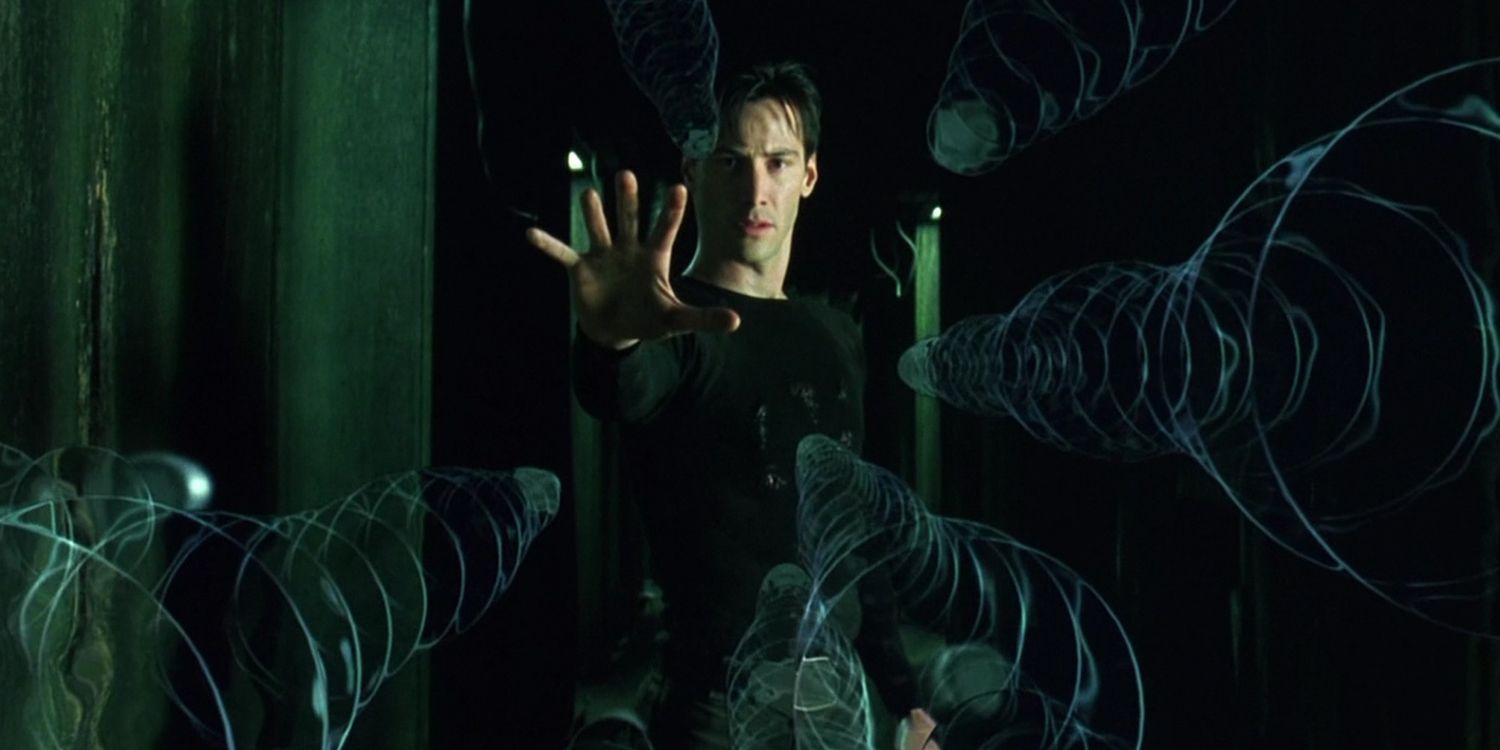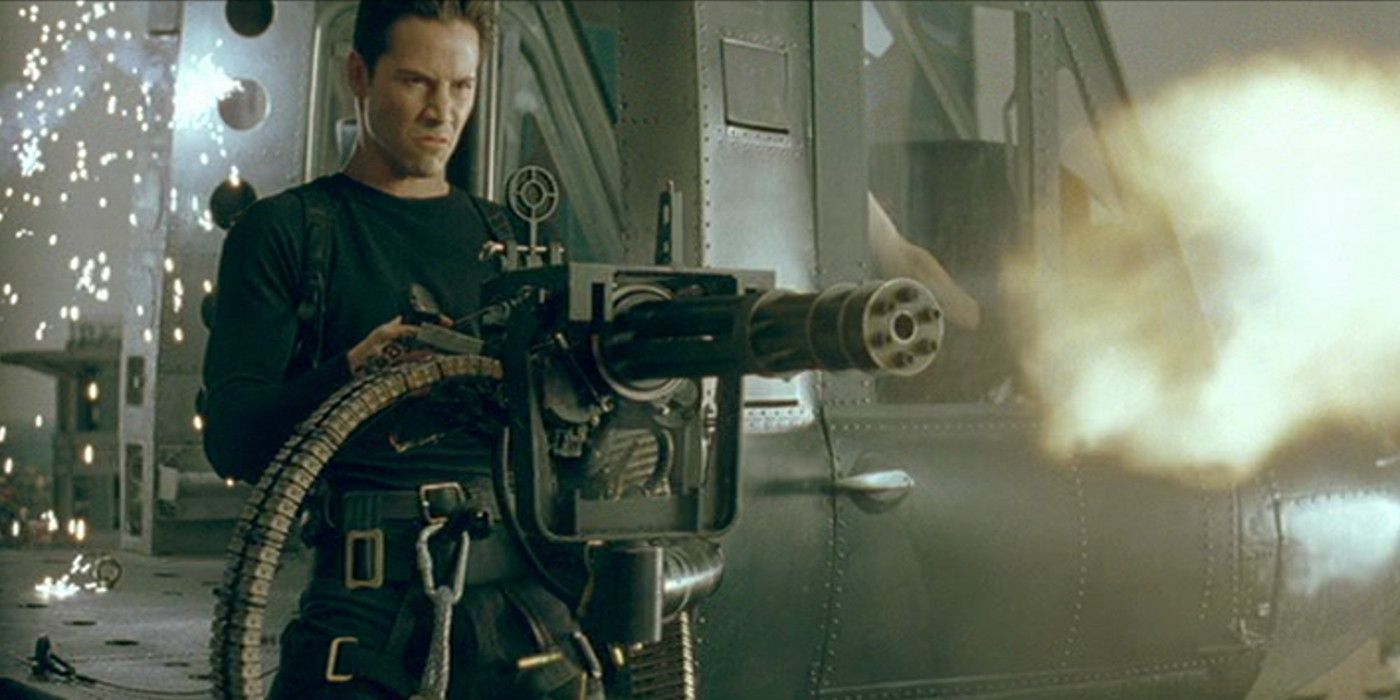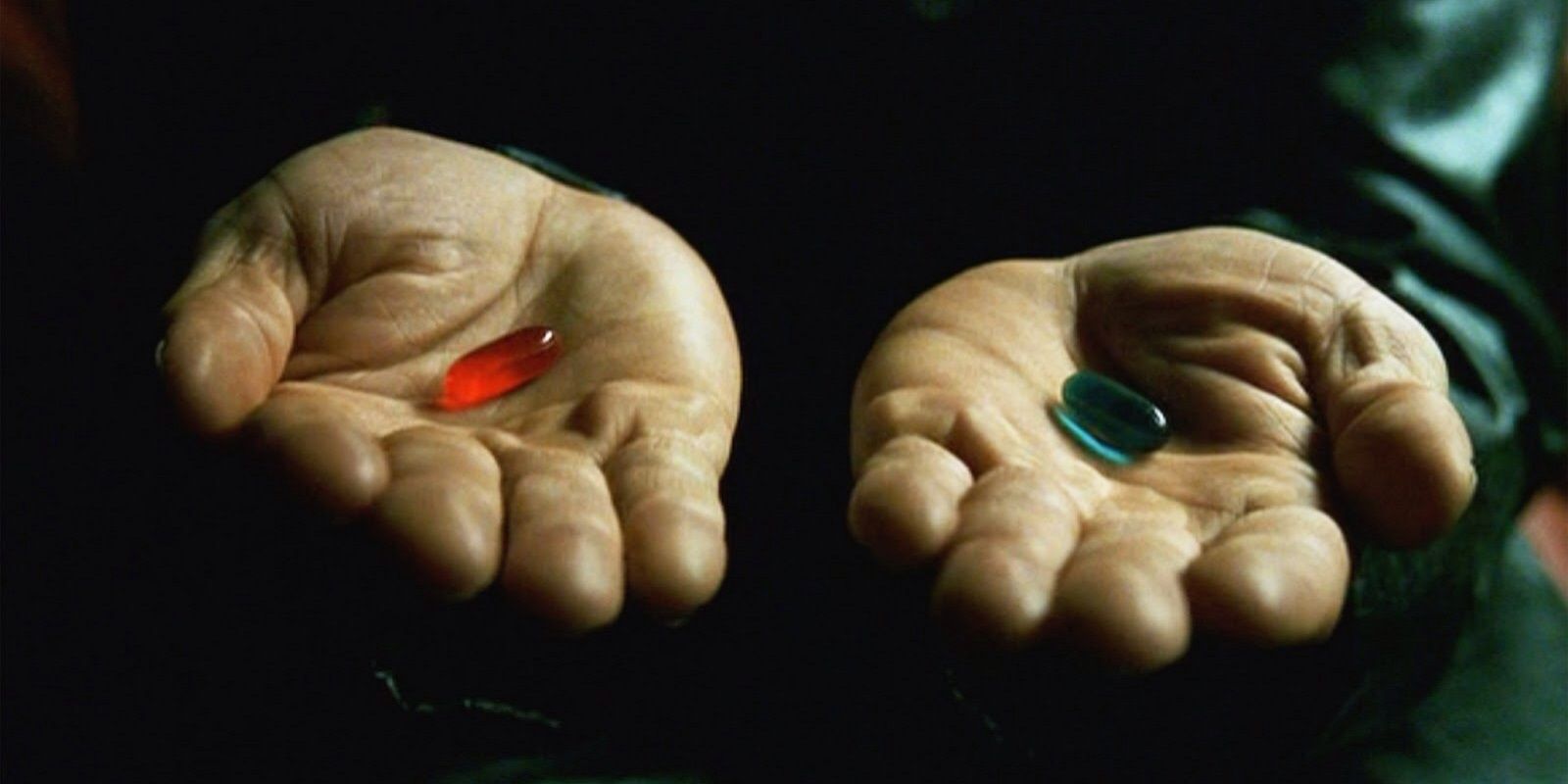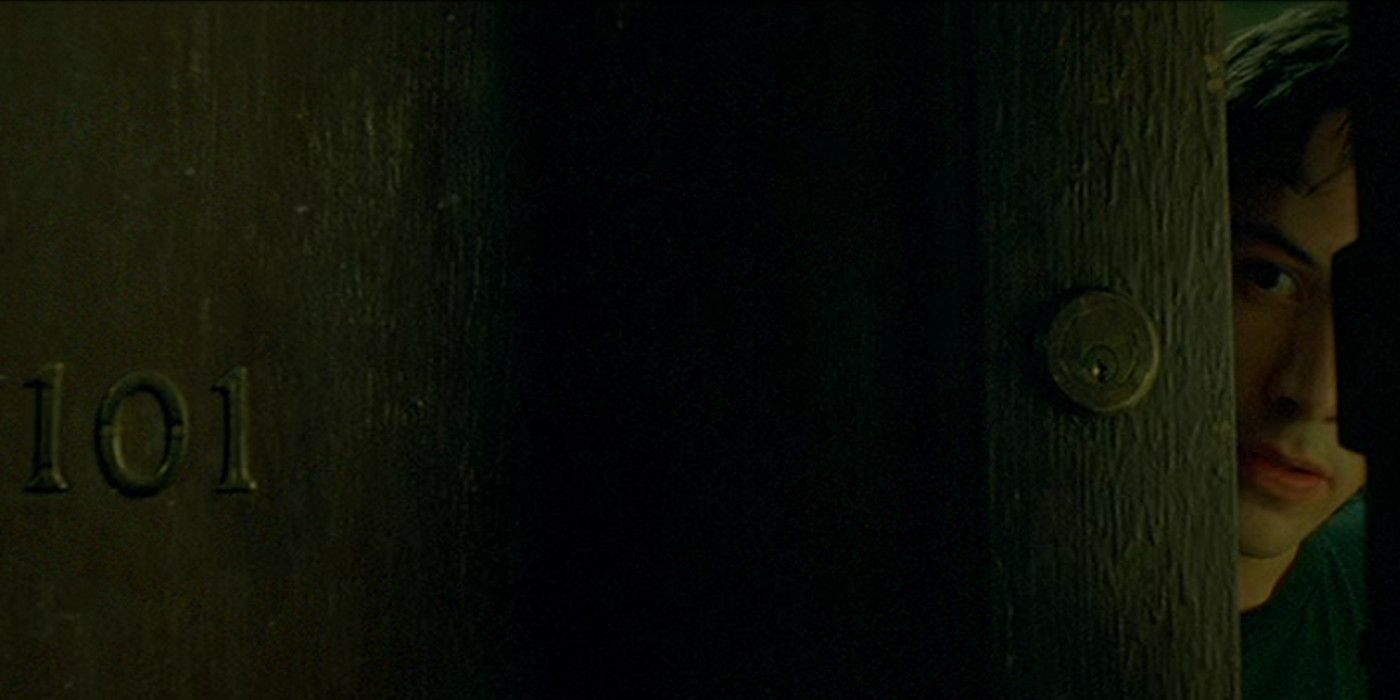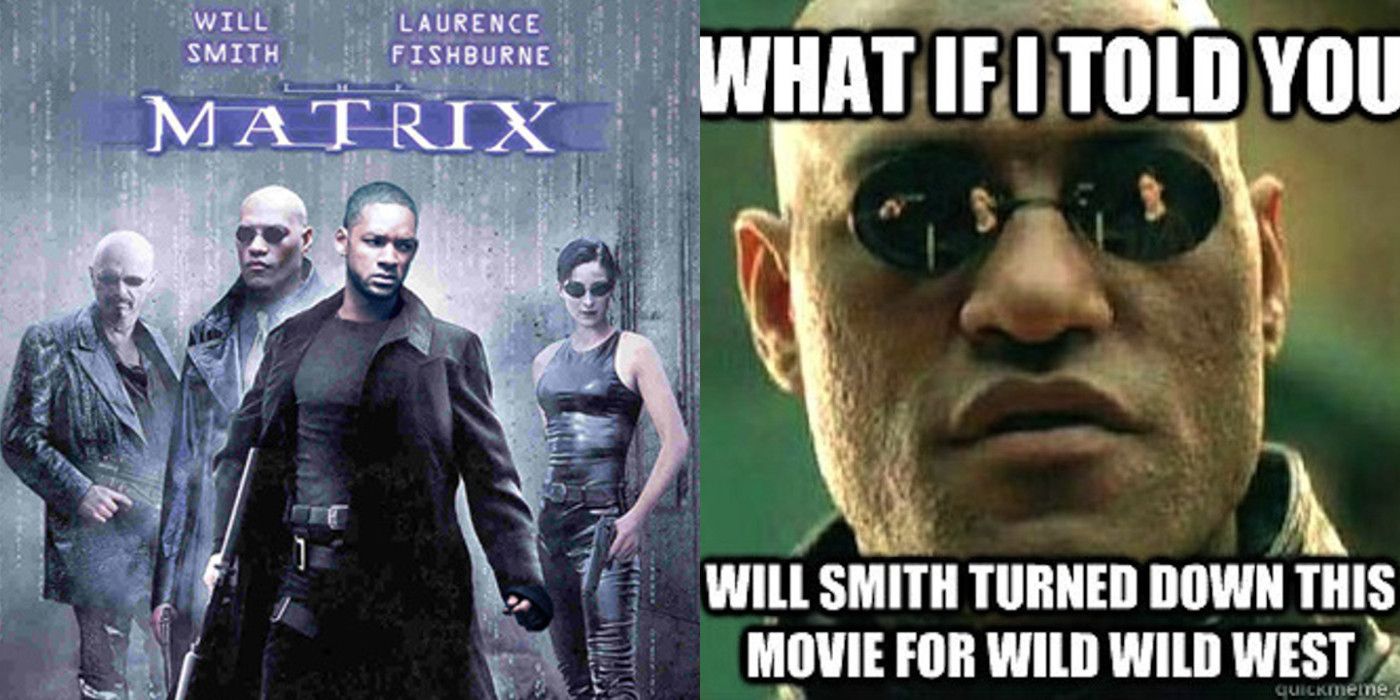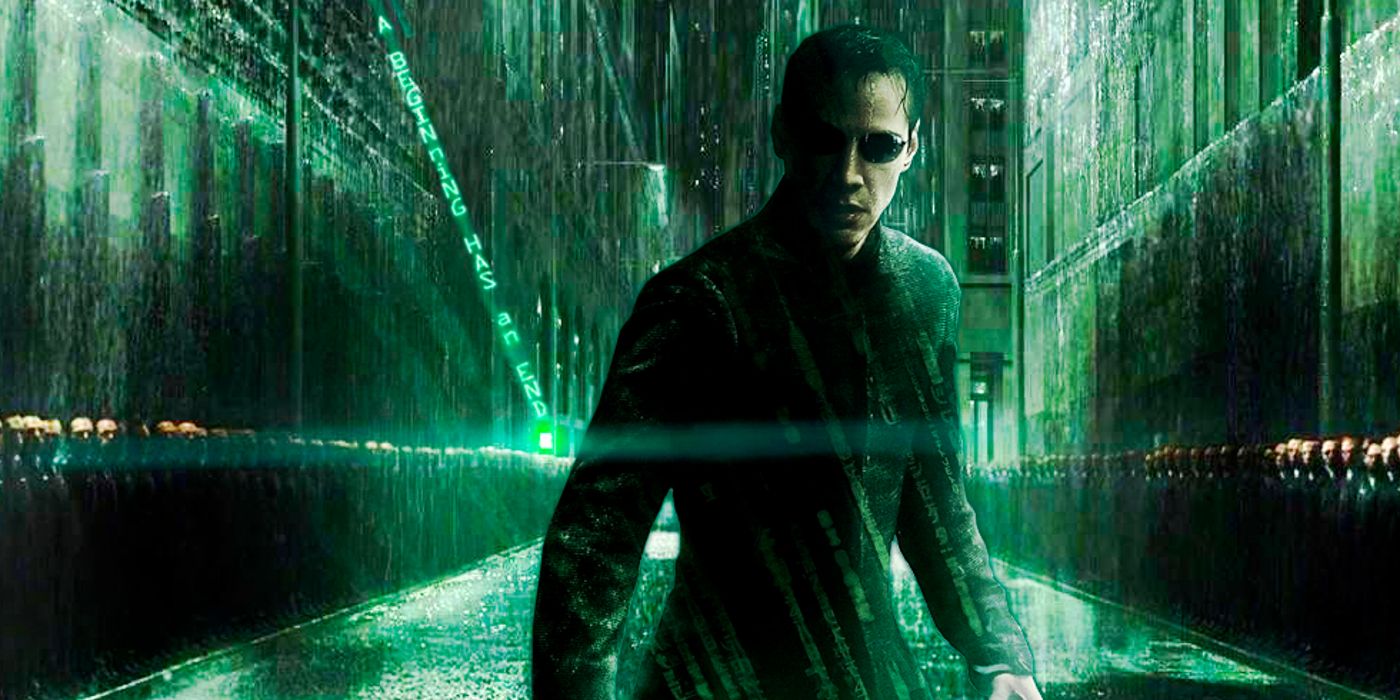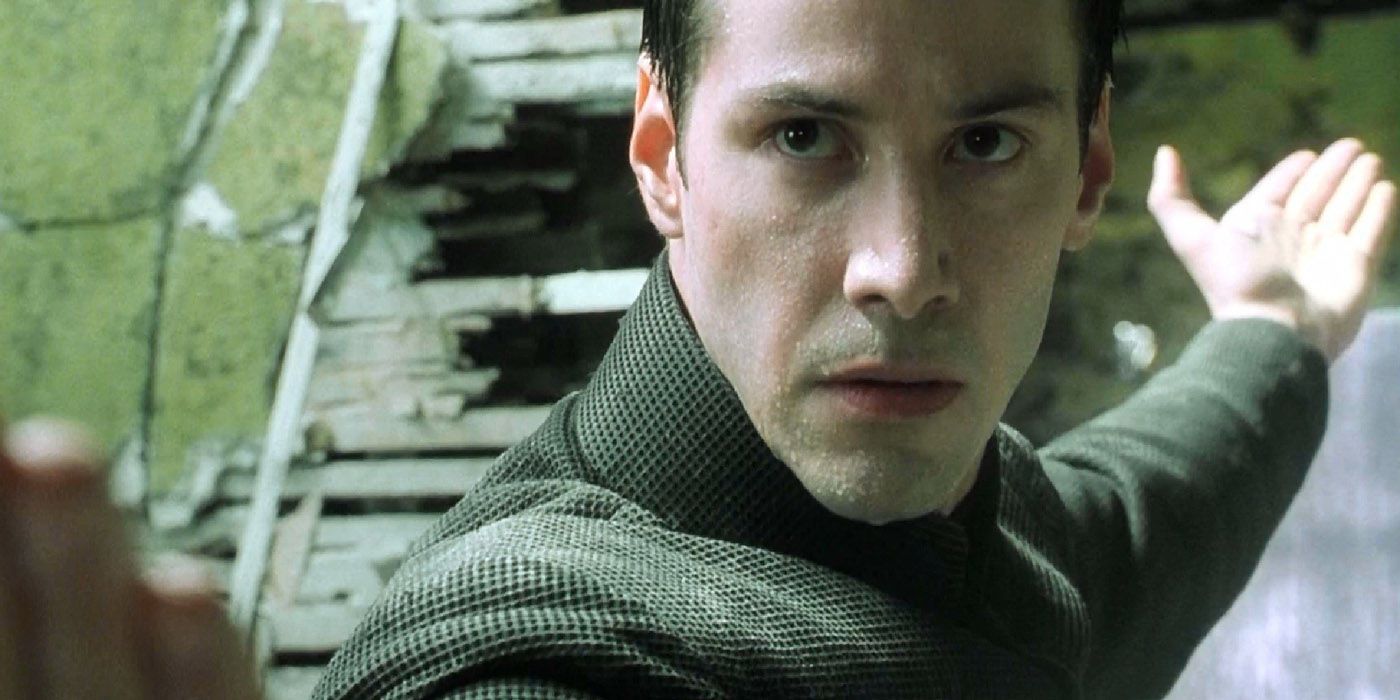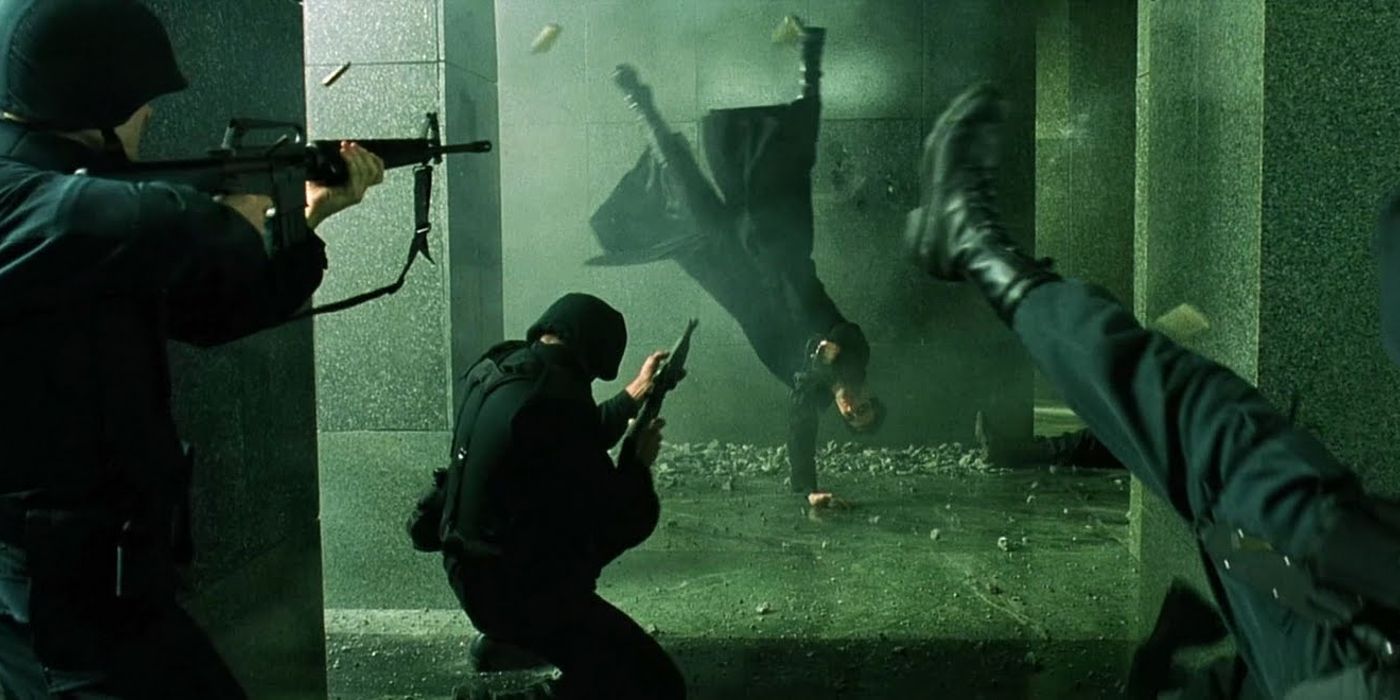The Matrix is coming back. Whether it’s a reload, a reboot, or a re-imagining remains to be seen, but audiences have made their feelings clear: don’t mess with the legacy of The Matrix, even if Reloaded and Revolutions didn’t quite match up to their predecessor. Reactions to the news of Warner Bros.’ reentry into the world of Neo (or Morpheus, if the most recent rumors are to be believed) were as opinionated and divisive as America's elections last November.
Whether you’re excited or disturbed by the franchise's return to the big screen, it’s the perfect time to revisit the original 1999 classic. Few movies succeed in creating an alternate universe as thoroughly engrossing as the one presented in The Matrix. Not only can you see it and feel it, but you can even hear it. Watching The Matrix is truly an immersive experience that makes you question your own existence and the things you take for granted.
To help provide some answers to the questions you may have, let's see how deep the rabbit hole goes with 15 Things You Didn’t Know About The Matrix:
15. Keanu Really Climbed Out That Window
One of Thomas Anderson’s first major tests comes when he's tasked with escaping the MetaCortex building. Morpheus calls him unexpectedly and warns him of an unnamed enemy hot on his trails. Though he successfully guides him through the labyrinth of cubicles, Morpheus stops his leadership at a key moment. He tells Thomas to get to the scaffolding on the skyscraper, reachable only by traipsing along the building edge 34 stories above the ground. The neophyte protests, “No way! No way! This is crazy!” Not only is it crazy, it’s real.
If this scene ever made your palms sweat, that may be because Keanu Reeves really did cling to the side of the building. Not only did he open the window and walk along the parapet of the structure, but he did it all while holding on tight to his clunky Nokia cell phone (again, 34 stories above the ground). The lines between reality and myth blurred in this moment, offering a perfect behind-the-scenes metaphor for the Matrix itself.
14. The Timeline Takes Place Over 19 Months
The Matrix trilogy had a meteoric rise and a very sudden end. Though the original film landed in 1999, it took four years for The Matrix Reloaded to reach theaters and just a few extra months for The Matrix Revolutions to close the books. In the actual timeline of the story, however, things moved quite a bit faster. According to the dates offered up in the films, it took exactly one year and seven months to track down Mr. Anderson and inspire him to save the world.
When Trinity and Cypher first speak, the “Trace Program” offers the date 2-19-98. Towards the end of The Matrix Revolutions, when Neo is seen on the phone, the same trace program reads 9-18-99. A lot has changed in those 19 months, considering that Mr. Anderson went from a corporate lackey to an all-powerful, Kung-fu fighting guy who can fly at the drop of a hat.
13. The Wachowskis Were Heavily Inspired By 'The Invisibles'
Long before they were making movies, the Wachowskis were in the comics business. They both wrote for Razorline, an imprint of Marvel Comics, and helped work on Clive Barker's Ectokid. Lana Wachowski admitted, “Because we grew up on comic books and the Tolkien trilogy, one of the things we’re interested in is bringing serial fiction to cinema.” It’s little wonder, then, that the germ of the idea behind The Matrix was born from the Wachowskis' appreciation for other comic lore.
A great deal of the aesthetics, characters, and world of The Matrix was taken from Grant Morrison’s The Invisibles. Even the author himself admitted that his source material was seemingly lifted by the hugely successful existential movie. As Morrison said, “It’s not some baffling ‘coincidence’ that so much of The Matrix is plot by plot, detail by detail, image by image, lifted from Invisibles, so there shouldn’t be much controversy.” Not only did Morrison level the playing field with his admission, but he claimed Reloaded and Revolutions would have been far better had the Wachowskis continued to pilfer his material.
12. They Spent Their Entire Initial Budget on the Opening Scene
It takes serious chutzpah to make a movie. Not only do you need a visionary story, but you need to convince a score of financiers, producers, and actors that your idea is as transcendent as you initially imagined. When the Wachowskis approached Warner Bros. with their follow-up to their 1996 movie Bound, they led with The Matrix and submitted a budget north of $80 million.
The mega-studio balked at the idea and came back with just $10 million, a small percentage of what the Wachowskis needed to realize their vision. Though that’s no small amount of cash, it wouldn’t get them more than ten minutes into the movie they dreamt of making. Throwing caution to the window, the directors circled the wagons with their crew and invested the full budget in the opening sequence alone. They literally bet the ranch on Carrie-Anne Moss selling the world of The Matrix, and when they showed the executives the result of their $10 million investment, Warner Bros. quickly got out their checkbooks to pay whatever was necessary to finish the movie.
The production budget ended up being around $63 million when all was said and done, but considering that the film raked in over $463 million worldwide, we'd say it was a wise investment.
11. “The Matrix Defense” Has Kept Criminals Out of Jail
In The Matrix, there are no limits. It’s a world of infinite possibility where the mind is malleable and the body is boundless. This revolutionary concept permeated pop culture in a serious way, and not just for its cool sunglasses, trench coats and bullet time. The world the Wachowskis brought us also gave a foothold for a series of murderers who blamed their actions on their mistaken belief that they were, in fact, living in the Matrix.
In 2002, a woman named Tonda Ansley murdered her landlord. When arrested, she allegedly told the police, “They commit a lot of crimes in The Matrix.” While on trial, Ansley’s attorney embraced her casual remarks and built the defense case around it, alleging that “our world is just an illusion generated by our machine overlords.” The jury bought the story hook, line, and sinker, setting the precedent for a future where The Matrix Defense would keep multiple killers out of prison and away from the death penalty.
10. The Whole Movie is Color Coded
There is rich symbolism throughout The Matrix, and the Wachowskis’ usage of color is equally deliberate. Green is the color of the Matrix. It’s the bland, pallid tone that dominates the quotidian lives of those lacking free will. From giving the actors greenish clothing to tinting the set lights, the Wachowskis took care to create a sense of claustrophobia and complacency for scenes inside the Matrix.
The color blue dominates the “real world,” and with it comes a feeling of warmth and truth. These navy colors are particularly strong on the Nebuchadnezzar, where Neo and Trinity wear blue clothing and sit beneath tinted lights.
Yellow signifies something other than the real world and the cold reality of the Matrix. When Morpheus trains with Neo, the jaundice color spectrum looks utterly different than anything else in the movie. To round out the palette, gold is the color of the machines, and white is reserved for moments of purity and wholeness (like when Neo meets The Architect).
9. The Highway Sequence Wrecked 300 Cars
Though the two Matrix sequels are not viewed as favorably as the original, the highway sequence in Reloaded will be fondly remembered by most. Like an operatic intermission, the seemingly limitless action scene runs for fifteen straight minutes. Though that’s eons in a movie, it took over three months just to shoot the sequence. The stretch of road is referred to as the 101 in the story, but it’s actually a one-and-a-half mile long freeway built exclusively for the film. Constructed on an old airplane runway in northern California, the freeway chase took place on the former Alameda Naval Air Station.
Though the production crew went to great lengths to build this life-sized highway, it was dismantled shortly after filming wrapped. Through the course of shooting, over 300 cars were destroyed by the stunt team. Thanks to General Motors’ generous donation, the Wachowskis were never lacking for a new set of wheels.
8. Half of Neo’s Dialogue Is Questions
Though audiences had plenty of questions after their first viewing of The Matrix, they weren’t alone. Neo himself asked his share of questions throughout the movie. As it turns out, though Keanu Reeves only had 164 lines of dialogue in the movie, 94 of them were questions. This means that over half of everything uttered by “the one” was said from a position of the unknown. “What is the Matrix?” “Follow the white rabbit?” “Zion?” “Jujitsu?” “Squiddy? “EMP?”
You get the point. Without a doubt, Neo is very much the audience surrogate for much of the movie. His questions give us answers as we follow him further and further down the rabbit hole. Though 56% of his dialogue may be in the form of a question (we're not scientists, but we busted out our calculators and double checked the math), you can’t put a number on the perpetually confused look Keanu had on his face throughout the movie. Perhaps that was the biggest problem with Reloaded and Revolutions. The mystery was gone, replaced by a lack of wonder and Neo's insurmountable power.
7. The Helicopter Scene Broke Air Traffic Laws
Bullet time. Neo on a turret. Morpheus jumping out of a building. The sequences in, around, and after the helicopter scene elevated The Matrix to cult status. As it turns out, those high octane moments almost shut production down as the chopper flew through restricted airspace in Sydney, Australia.
It was too early to bank on the Matrix defense for this faux pas, but the pilots commandeering the attack helicopter were so absorbed in their job that they accidentally broke local air traffic laws. Producers on The Matrix lobbied (and succeeded) in changing the city’s legislation so that they could continue filming this momentous sequence. Indeed, they had spent over six months planning this part of the shoot, and the last thing they expected was to get a slap on the wrist from Sydney law enforcement. Fortunately, the Matrix crew won the day and were able to finish the sequence free of further trouble.
6. The Cast Had Required Philosophical Reading
As students of metaphysics will attest, The Matrix doesn’t skimp on philosophy. The Wachowskis drenched their narrative with complex questions and reality-challenging concepts. Though each of the major actors had to fit their respective roles and display a surefooted sense of physical prowess and confidence, the directors provided them with some required reading long before the first day of filming.
There were three texts given to Keanu Reeves, Carrie Anne-Moss, and Lawrence Fishburne: “Simulacra and Simulation,” “Out of Control,” and “Introducing Evolutionary Psychology.” These texts ran the gamut from computer systems, technology, and robots, to evolutionary psychology and the study of the soul. As Keanu described it, “Those were three books that they wanted me to read before I even opened up the script.” Knowing how turgid the world of the Matrix would first seem to the uninitiated, the Wachowskis sent their cast to school before giving them the red pill and inducing total consciousness.
5. Room 101 Is A Nod to George Orwell’s 1984
In George Orwell’s transcendent novel, 1984, Room 101 is housed in the Ministry of Love. Though the bureaucratic arm of Big Brother sounds pleasant, it is actually an institutionalized torture chamber that thrives on fear, brainwashing, and manipulation. In Room 101, victims are subjected to their worst phobias and forced to confront them without reprieve.
It’s no accident, then, that Thomas Anderson’s own apartment bears the same number. His lodgings are a hacker’s hellhole, a putrid place for a man striving to understand his existence and add meaning to his misguided life. In many ways, Neo’s home resembles Winston Smith’s apartment in 1984. Both places are drab and dreary, belying their occupants’ inner desire to achieve something greater.
Later, in The Matrix Reloaded, Neo, Morpheus, and Trinity meet the Merovingian after walking through a hallway with ‘101’ posted at the front. Before long, the trio finds that their gravest fears have been realized and that their lives are at risk.
4. Will Smith, Sean Connery, and Russell Crowe Turned Down Roles
Hollywood is filled with regret. In defense of those who turned down roles in The Matrix, it must have seemed like a truly ludicrous concept that could easily have made for a disastrous film. Will Smith may be the most prominent actor to have turned down the role of Neo, and even he admitted to not having the breadth of experience to appreciate what the Wachowskis had developed: “You know, The Matrix is a difficult concept to pitch. In the pitch, I just didn’t see it. At that point, I wasn’t smart enough as an actor to let the movie be.” After moving on from The Matrix, Will Smith instead opted for a little-known saloon movie called Wild Wild West. True story.
Other actors considered for the lead role were Brad Pitt, Johnny Depp, and even Nicolas Cage. As for Morpheus, Russell Crowe allegedly turned down the lead role, while actors like Gary Oldman and Samuel L. Jackson were in the running. Sean Connery was reportedly offered Laurence Fishburne's part as well, though other rumors state that he was actually considered for the Keymaker and the Architect in the sequels.
3. That’s Not Just Rain In Revolutions, It’s Matrix Code
Certain aspects of The Matrix Revolutions seemed interminable. The action sequences had exciting moments, but they droned on, and in increasingly repetitive ways. Though they are perhaps the wettest fight scenes in recent memory, it would be a mistake to assume the rain is just water. As it turns out, much of the H2O falling from the skies is actually computer code dripping through reality. Given the Matrix was increasingly unstable throughout Revolutions, this subtle choice by the Wachowskis confirms that the world of Agent Smith and the sentinels is beginning to crack. The rain falls as the Matrix collapses.
Though it may be difficult to notice the coding in the scene if you're watching on your computer screen or phone, you can observe the inconsistencies on a larger HD monitor. In close-up shots for Neo and Smith, keep a sharp eye out for the occasional rain drop that appears to move and short circuit.
2. Keanu Had Spinal Surgery Just Before Filming
If you watch the behind the scenes footage of The Matrix, you’ll notice that Keanu Reeves wore a neck brace throughout pre-production. Reeves had a compressed disk in his spine along with one that was completely shattered, a condition that caused him to “[fall] over in the shower in the morning, because [I] lost [my] sense of balance.” Following a two-level fusion surgery, Keanu was on the path to recovery, but was still unable to use the full strength of his body.
Despite the four-month long training process each of the actors had to endure, Reeves was unable to kick without threatening the success of his operation. That’s why The Matrix fight choreography features more punching and hitting than kicking and jumping, especially for Keanu Reeves. Of course, Neo gets his revenge by the end of the movie, when his most important kick yet boots Agent Smith from one end of the hallway to the next.
1. The Lobby Shootout Featured No CGI
Tired of excessive CGI and ready for something a little more real? Look no further than The Matrix, the (surprising) patron saint of practical effects. Though it took the Wachowskis a week and a half to shoot it, the lobby sequence was worth every second of work, as it remains one of the movie’s most memorable moments. It features truly visceral gunplay, where pistols, SMGs, and 12-gauge shotguns turn a federal building into turn of the century trench warfare.
The best part is that all of it’s real, right down to the marble panel collapsing in the wide-shot of the devastation. Though the set designer hadn’t intended for that happy accident, the spontaneous rubble was the perfect button on such a thrilling scene. The acrobatics, destruction, and melee of combat were done with actors, ingenuity, and patience, with no CGI required. Let’s hope the reboot takes note of that and makes practical effects cool again.
--
What other Matrix facts should we know about? Are we all living in the Matrix, and thereby leading a meaningless existence? Let us know in the comments!

